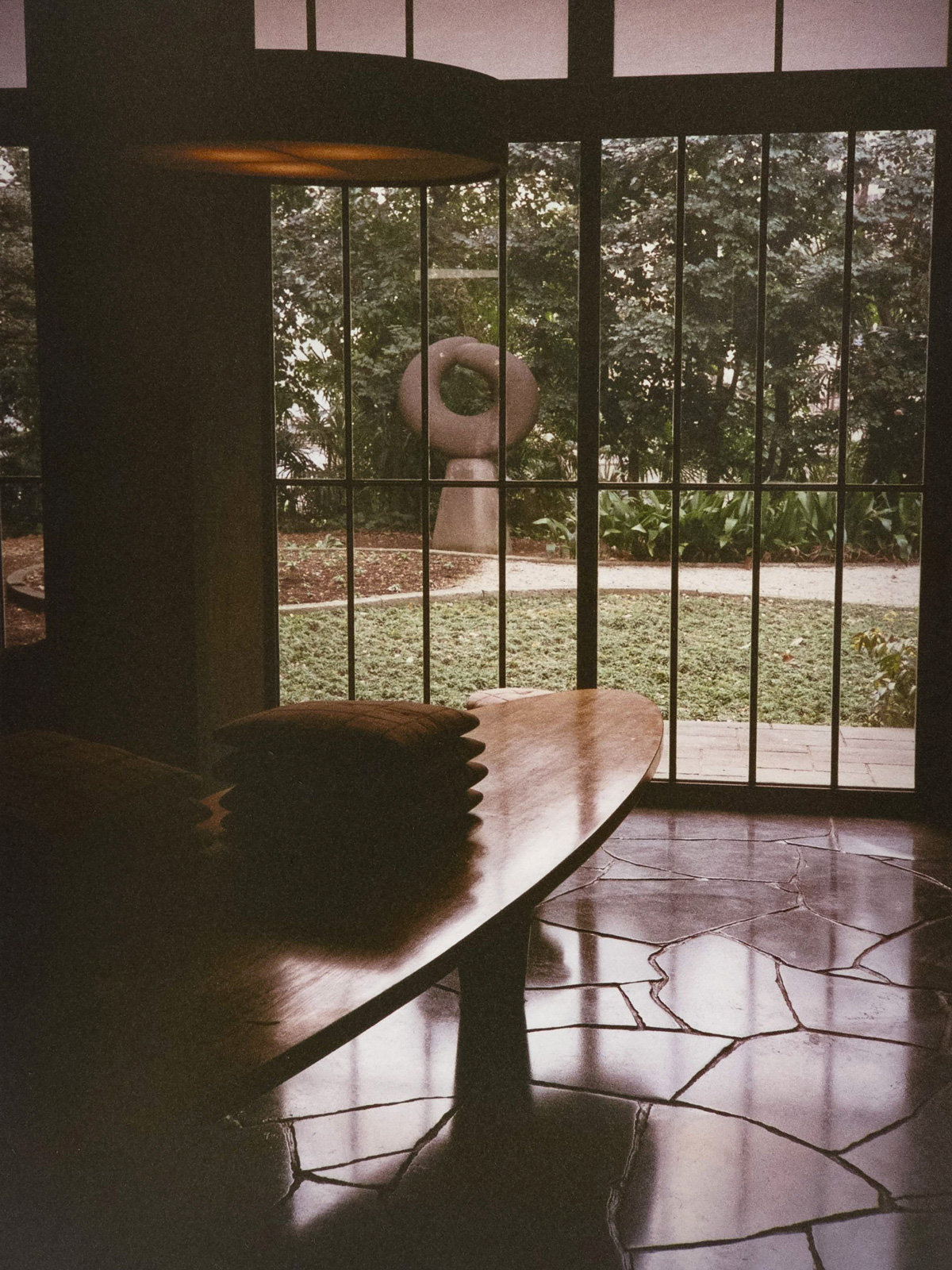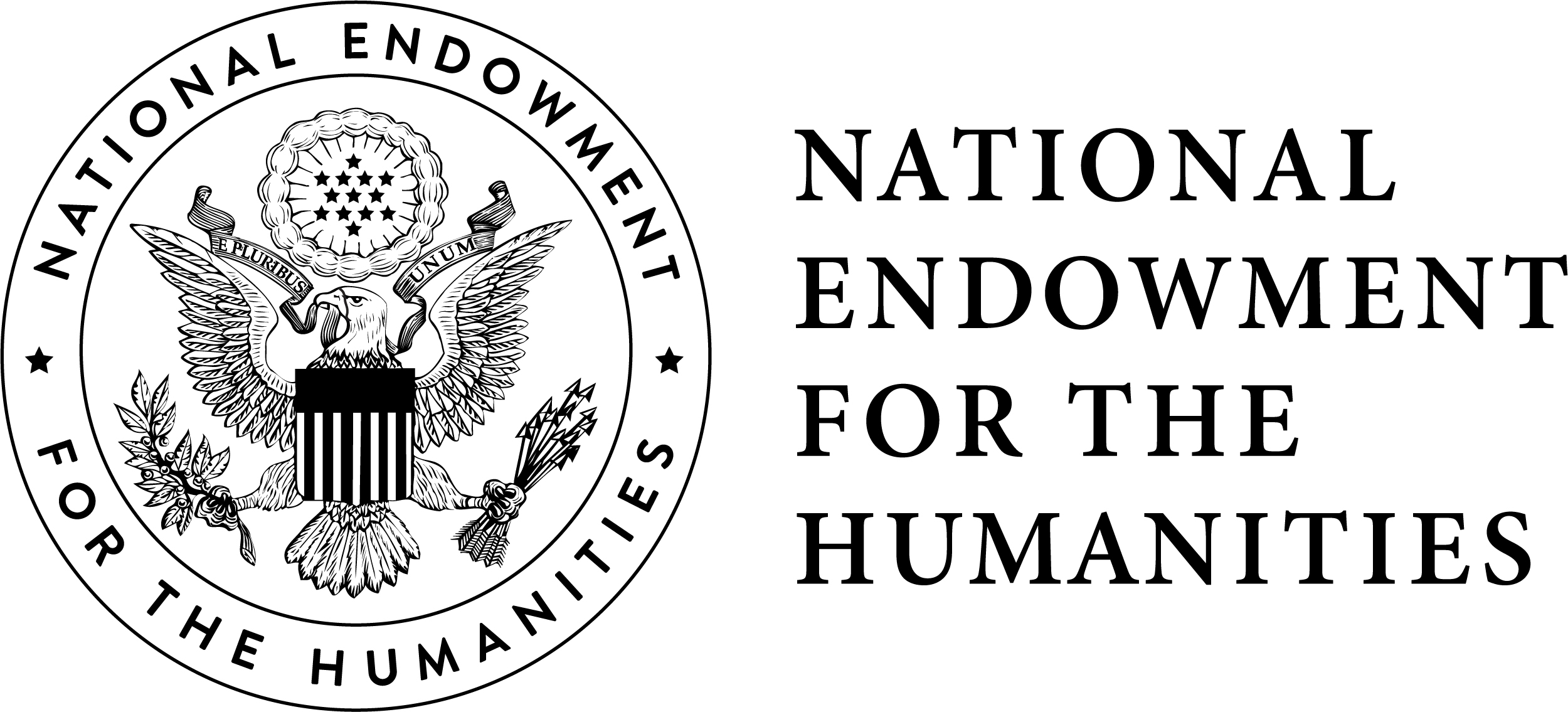By Objects of Common Interest

Noguchi in Greece,

Noguchi in Greece,
Greece Within Noguchi
Introduction
By Dakin Hart, Senior Curator (2013–23)
Maybe you lay on a rock by the shore, or in a sunbeam on the floor of your room. You were young, just coming into conscious being. You closed your eyes, turned your face to the sun, and let the wave of warmth flow through you. For a moment your mass became energy.
Who would you be and what would you expect from the pitiless waste of existence if you had not been that sort of child? Had you not drunk life from the source? Been baptized in light? Had the opportunity to learn what it means to be at once nothing and part of everything?
To those who are open, some environments have that potency: the power to suffuse and alter our core matter. There are as many names for this as there are ways to think and talk about it. But the search for such experiences of place is why many of us travel: looking to be marked. There are minds with the force and consistency to burn through and remake us too. If we’re lucky, maybe we have a few such encounters in a lifetime.
Greece, and all that the word connotes about how we absorb history, culture, and place, is one of those nexuses. For some, Noguchi’s way of thinking—an ocean of clarity worth drowning for—is another.
Objects of Common Interest
As Greek designers and architects living and working in New York we share with Noguchi the in-betweenness of two worlds. Our cultural split, like his, lies within the essence of our work. We have long been intrigued by Noguchi and have informally researched him for some time. A few years ago, our interest became more formal when we began talking with The Noguchi Museum. With the publication of the Museum’s archives online, we gained access, along with the rest of the world, to the specific information we needed to make sense of our intuitive connections.
As Noguchi’s friend R. Buckminster Fuller wrote, “Isamu traveled on and on … as the intuitive artist precursor of the evoluting, kinetic one-town world man.”1 Noguchi first became acquainted with Greece through the classical myths his writer mother read to him and later on through his own travels. As Noguchi told it, “I started a custom of stopping in Greece on my various trips to and from Japan. There I had found a worker who could block out simple forms in Penteli marble which I could work on later in New York.”2
This feature unfolds the significant connection between Noguchi and Greece that goes well beyond the artist’s quest for the country’s magical white marble, tapping into the transformative relationship between him, the place, and its people. A place he was initially introduced to through mythology but later discovered so personally that he once described it as his “intellectual home.”3
“Isamu [has] always been inherently at home—everywhere,”4 Fuller explained. Living and working between East and West, with a dual identity and a borderless freedom, he was intuitively receptive, continuously absorbing inspiration and abstract references that sculpted his work and personality in a unique, unparalleled way.
Through a creative and investigative approach, we have combined an amalgam of information, experiences, and moments in time into this interpretative documentation, which allows the reader to embark on a nondirected, visual journey inspired by Henry Miller’s The Colossus of Maroussi, which Noguchi carried with him. Of Greece, Miller wrote:

The Noguchi Museum Archives, 07883. ©INFGM/ARS
Noguchi in Greece
“I think of Greece with greatest fondness and would like to visit there again as I used to during the ’50s when I would get marble from a dealer there. There was a group with a gallery–they had a magazine in which I was reproduced, and my friend Nata Melas who married the architect who did all those lovely places for tourists, and there was Mr. Kapralos, and of course during the early times, Kiriokos Ghika and his wife who I took to an Italian opera.”6
Noguchi traveled frequently and was introduced to Greece’s creative and intellectual scene during his visits, creating strong friendships and bonds. He exchanged correspondence with many of the friends that he made until his death in December 1988. On his last trip to Greece in the summer of 1988 he had attended the Delphi Conference at the personal invitation of the curator Katerina Koskina.
Presented here in a visual collage are letters, photographs, and notes related to the network of people that surrounded Noguchi while in Greece, alongside works of Greek artists and elements that seduced and captivated Noguchi under the Greek light. Together these offer a framework for introducing and understanding the context within which Noguchi circulated.




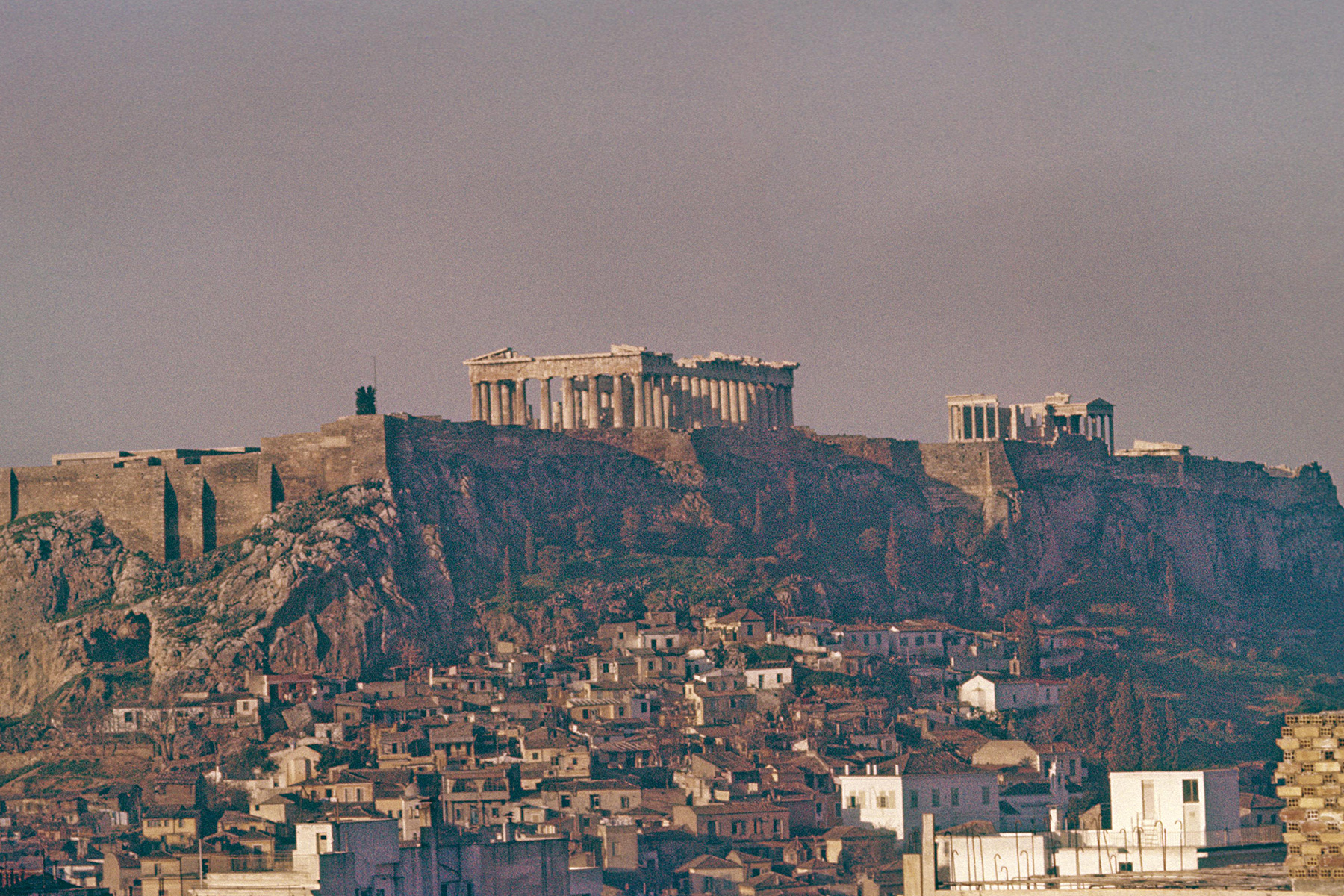








The Noguchi Museum Archives, MS_COR_002_008. ©INFGM/ARS
- Isamu Noguchi, letter to Zissimos Lorenzatos, July 5, 1979.
The Noguchi Museum Archives, MS_COR_002_008. ©INFGM/ARS
“Athens was all white marble then—or so it seemed—reflecting your beautiful sea and air. And the Acropolis was fairly deserted as I am sure it is no longer.”8







Dear Mr. Lorenzatos,
I can not enough thank you for sending your book of Haiku in Greek. I discovered it upon my return from Japan about 3 weeks ago. This is an addition to what I have to be thankful for to Ezra Pound. I will take your book with me when I return to Japan in 2 weeks to show the musician Takemitsu who I believe will do the music for Pound’s version of the Women of Trachis which it is proposed to present in the Japanese “Noh” manner.
With gratitude and best wishes in the New Year.
Isamu Noguchi9

- Isamu Noguchi, letter to Zissimos Lorenzatos, December 26, 1969. Zissimos Lorenzatos Archive, National Bank of Greece, Cultural Foundation/Hellenic Literary and Historic Archives (NBGCS/HLHA). Courtesy of Stephanos Troupakis (The Estate of Zissimos Lorenzatos).

- Isamu Noguchi, letter to Zissimos Lorenzatos, December 26, 1969. Zissimos Lorenzatos Archive, National Bank of Greece, Cultural Foundation/Hellenic Literary and Historic Archives (NBGCS/HLHA). Courtesy of Stephanos Troupakis (The Estate of Zissimos Lorenzatos).
Dear Mr. Lorenzatos,
I can not enough thank you for sending your book of Haiku in Greek. I discovered it upon my return from Japan about 3 weeks ago. This is an addition to what I have to be thankful for to Ezra Pound. I will take your book with me when I return to Japan in 2 weeks to show the musician Takemitsu who I believe will do the music for Pound’s version of the Women of Trachis which it is proposed to present in the Japanese “Noh” manner.
With gratitude and best wishes in the New Year.
Isamu Noguchi9

“A Famous Sculptor in Athens,” Eleftheria (Liberty), February 20, 1958.
- Isamu Noguchi, interview by Freddy Germanos,
“A Famous Sculptor in Athens,” Eleftheria (Liberty), February 20, 1958.
“Have you been to Delphi? Of course you have, you are Greek. Anyway, it is there that you can see what I’m describing in its most perfect, most ideal application. Did you notice how well the space ties in with the objects and the movements of people, and how perfectly, how wisely the whole thing is framed by nature. Looking at the paths, don’t you get the impression that there are still people in togas still walking around as if time fossilized on the marbles and the stones”10




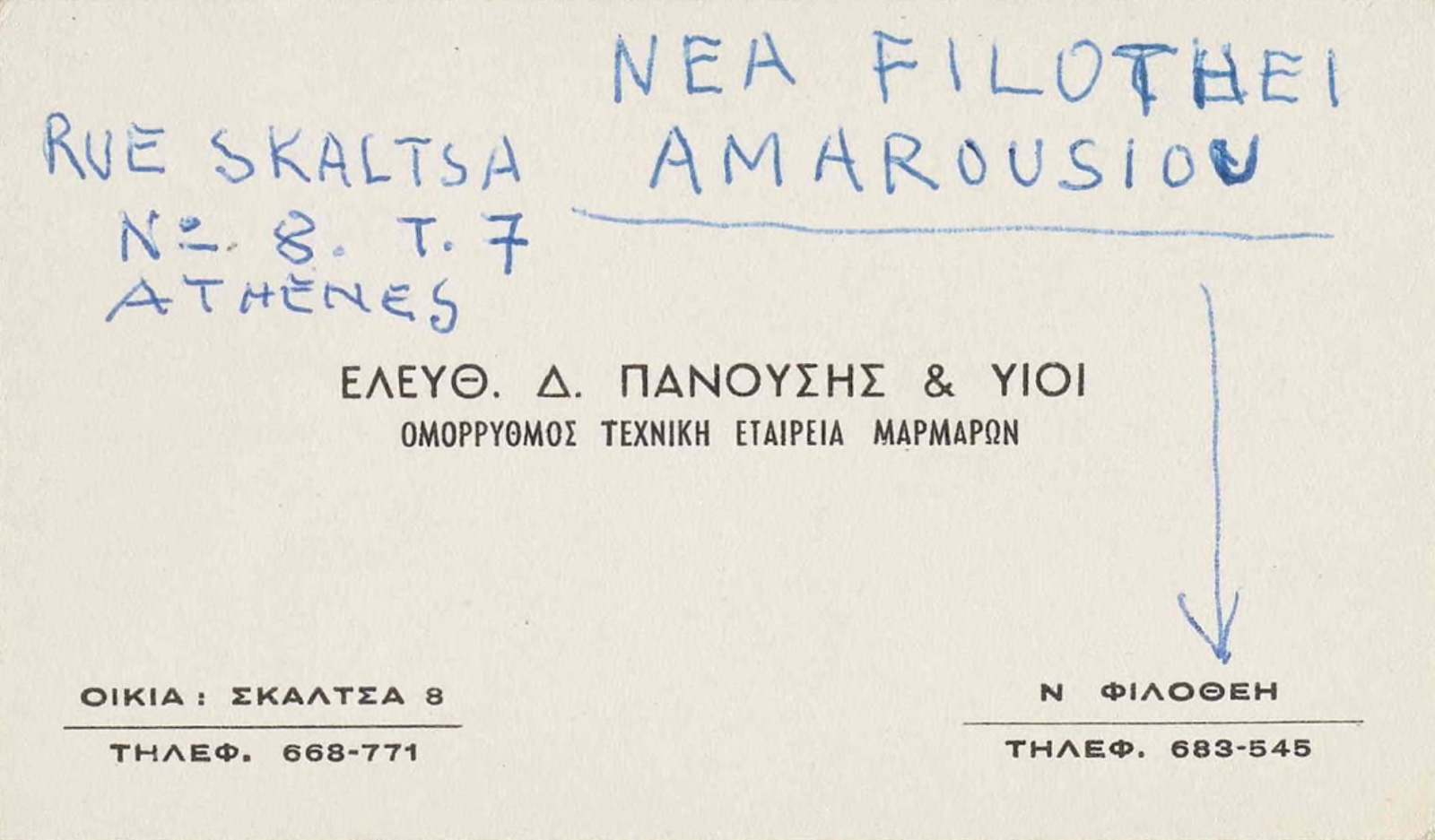
“Greece… Oh, it’s my love. I feel as if I were born here. I think that every artist who discovers Greece must feel the same…”11

The European Cultural Centre of Delphi. Courtesy of Professor Paul Kalligas.
- Isamu Noguchi learning the Zeibekiko, a greek folk dance, at a tavern in Delphi, Greece, 1988.
The European Cultural Centre of Delphi. Courtesy of Professor Paul Kalligas.

The European Cultural Centre of Delphi. Courtesy of Professor Paul Kalligas.
- Isamu Noguchi learning the Zeibekiko, a greek folk dance, at a tavern in Delphi, Greece, 1988.
The European Cultural Centre of Delphi. Courtesy of Professor Paul Kalligas.
“Greece… Oh, it’s my love. I feel as if I were born here. I think that every artist who discovers Greece must feel the same…”11

The Noguchi Museum Archives, 07007. ©INFGM/ARS
Greece Within Noguchi
“I believed in Apollo and the Gods of Olympus before I knew of any other.”12
Archaic figures, standing columns, marble paved paths, recalling childhood memories and feelings surfacing upon facing places for the first time, the sight of untouched landscapes under the bright sun and light breeze, myths and history, poems and haiku. These are some of the notions, elements, experiences, and ideas that shaped Noguchi’s impression of Greece, and which he would continually draw on and translate in his own artistic work.



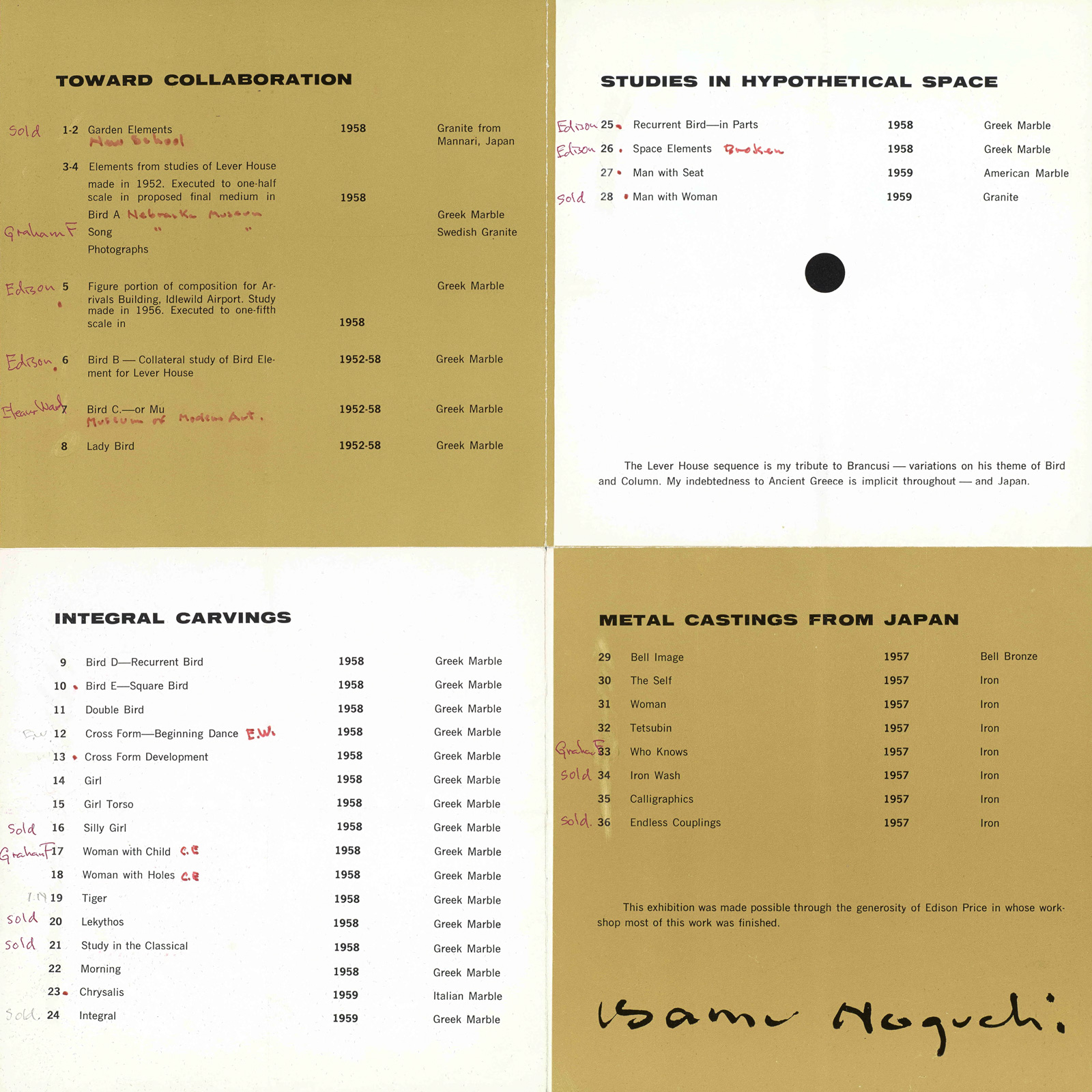


The Noguchi Museum Archives, MS_WRI_001_003. ©INFGM/ARS
- Isamu Gilmour (Noguchi), “The Greeks and Socrates,” 1922, high school essay.
The Noguchi Museum Archives, MS_WRI_001_003. ©INFGM/ARS
“In this essay upon the relations of Socrates to Greek thought, I shall first give the historical and cultural background leading up to his time. The view that I shall present will appear to be, obviously, not in accord with the current conception of the childhood of mankind. I hope it will prove to be of interest both because of this difference and because of some grains of truth that may be formed therein. I will begin with the origin of gods.”13





“With my double nationality and double upbringing, where was my home? Where my affections? Where my identity? Japan or America, either, both—or the world?”14

- Isamu Noguchi with Kouros (1945) at the exhibition Fourteen Americans, Museum of Modern Art, New York, September 10, 1946–December 8, 1946. Photo: Eliot Elisofon. The Noguchi Museum Archives, 04336. ©INFGM/ARS

- Isamu Noguchi with Kouros (1945) at the exhibition Fourteen Americans, Museum of Modern Art, New York, September 10, 1946–December 8, 1946. Photo: Eliot Elisofon. The Noguchi Museum Archives, 04336. ©INFGM/ARS
“With my double nationality and double upbringing, where was my home? Where my affections? Where my identity? Japan or America, either, both—or the world?”14
“My first recollection of joy was going to a newly opened experimental kindergarten when I was about four where there was a zoo, and where children were taught to do things with their hands. My first sculpture was made there in the form of a sea wave, in clay and with a blue glaze.”15

- Isamu Noguchi, Islands, 1946. Cement, burlap, wire mesh, plywood. Set elements for Martha Graham’s Cave of the Heart (1946). Photo: Kevin Noble. The Noguchi Museum Archives, 00149. ©INFGM/ARS

- Isamu Noguchi, Islands, 1946. Cement, burlap, wire mesh, plywood. Set elements for Martha Graham’s Cave of the Heart (1946). Photo: Kevin Noble. The Noguchi Museum Archives, 00149. ©INFGM/ARS
“My first recollection of joy was going to a newly opened experimental kindergarten when I was about four where there was a zoo, and where children were taught to do things with their hands. My first sculpture was made there in the form of a sea wave, in clay and with a blue glaze.”15

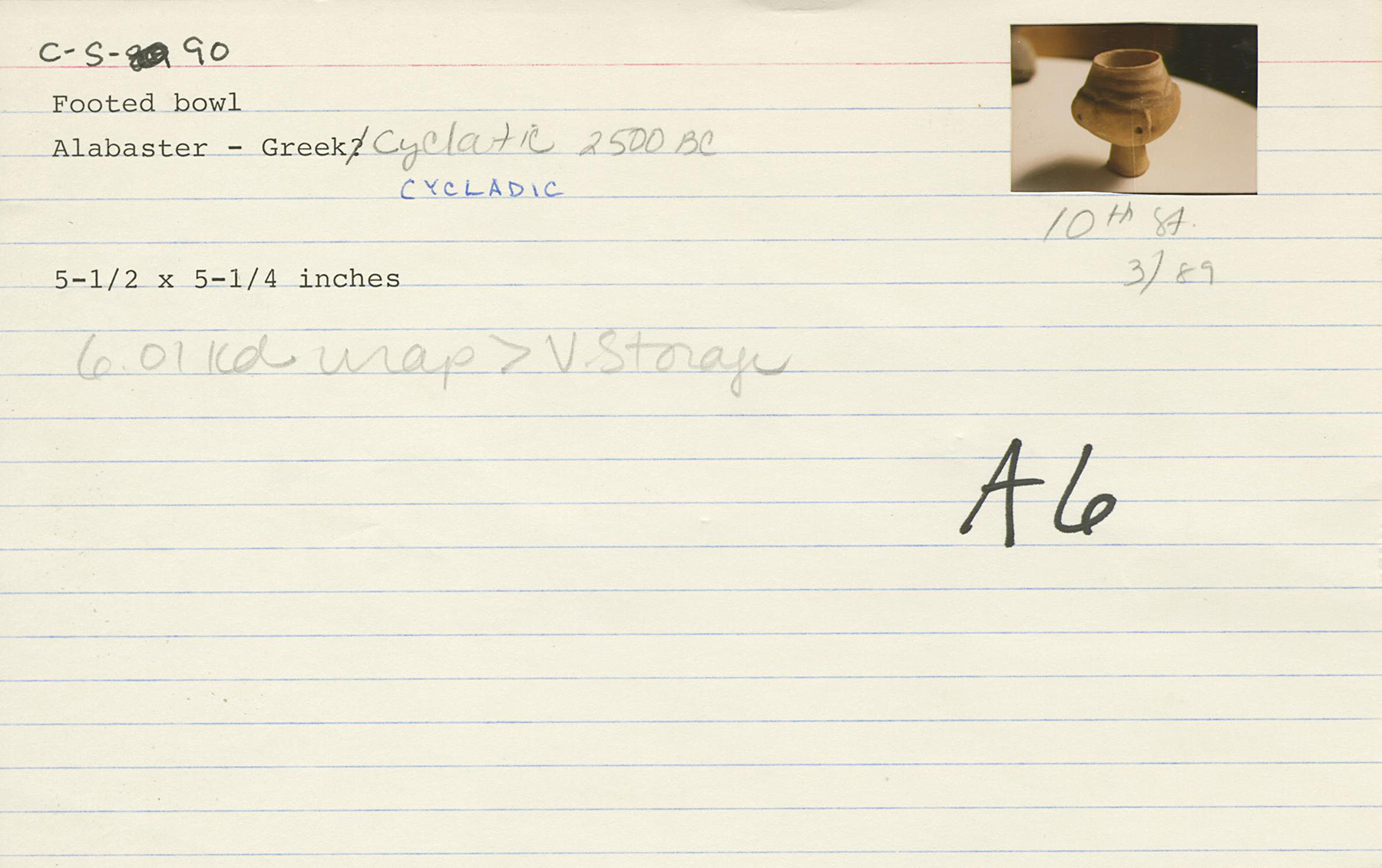













- Isamu Noguchi, interview by Catherine Frantzeskakis, “The American-Japanese Sculptor Isamu Noguchi Talks about Greece,” Zygos (Libra), 17 (March 1957): 9. Courtesy of Aikaterini and Ion Frantzeskakis.
“Brancusi made abstract art. And so I, too, started from abstract art. But it is still my impression that Brancusi was influenced much more by the Greek art of the pre-classical years than African art, which is considered the natural birthplace of abstract art.”17
“Under such conditions, I can say that I have a little of the consciousness of a Greek… Perhaps that allows me to make certain observations with love and understanding.”18
“Under such conditions, I can say that I have a little of the consciousness of a Greek… Perhaps that allows me to make certain observations with love and understanding.”18
![Isamu Noguchi, letter to Michel [Michael] Tombros](https://www.noguchi.org/wp-content/uploads/2021/06/MS_COR_070_032_original_1-2-1.jpg)


![Isamu Noguchi, letter to [Michel] Michael Tombros](https://www.noguchi.org/wp-content/uploads/2021/06/MS_PROJ_081_025_original_1-1.jpg)


Courtesy of Rachel Phillips and Burnside Rare Books.
Tracing Noguchi
Throughout the duration of this research, we have had the opportunity to take a step back and see our own work—which has always been driven by intuition, creative and conceptual curiosity, and material investigation—through a personal critical lens.
Noguchi has been a reference for us not only because of the diversity of his work, and because he never accepted the confines of borders and creative limits, but also because of his open-mindedness, and how motivated he was by inspiration. Since our earliest days in New York, The Noguchi Museum has been a sanctuary for our creative meditations.
As our work has matured and our exploration expanded in scale, from objects to installations to architecture and space-creation, we have connected more with our Greek roots and have naturally turned to blending notions of our history, memory, and experiences in an abstract way. Here too Noguchi has provided many hints and signposts. As we investigated, it became almost essential to express how our study of Noguchi has affected our quest for abstraction. Noguchi’s impact on us is not unlike that of the Greek landscape, sun, and culture: not in any direct way related to formal expression, but the essential backdrops to our journey.
Through photography, a subject becomes an object in a new world. With that in mind, we invited a number of international photographers, in whose work we see an interest in the notions and values that we have tried to attribute to Noguchi and Greece in this feature, into a creative dialogue. We gave them complete freedom to interpret our work in relation to Henry Miller’s The Colossus of Maroussi, which Noguchi carried with him on his initial travels through Greece. We provided them with the following excerpts, which to us signify freedom and a familiar feeling of a first encounter with Greece.




The Noguchi Museum Archives, MS_BOL_022_00. ©INFGM/ARS
L
Mathjis Labadie
Layer Mirrors
M
Marble Mirror
N
O
Opal Bent Stool
Offerings
P
Q
R
Jana Romanova
Relativity
S
Omar Sartor
Matthieu Salvaing
Side Table
T
Stefanos Tsakiris
Tube Chair
Tube Lights
U
V
W
X
Y
Z
Marco Arguello
Marble Mirror

Iwan Baan
Opal Bent Stool

Yannis Bournias
Relativity

Lauren Coleman
Offerings

Brian Ferry
Layer Mirrors

Adrianna Glaviano
Formations

Brooke Holm
Tube Chair

Naho Kubota
Tube Lights

Mathjis Labadie
Acrylic Bent Stool

Jana Romanova
Side Tables

Omar Sartor
Daydream

Matthieu Salvaing
Layer Stool

Stefanos Tsakiris
Hunky Dory

Special thanks to Dr. Nicolas Paissios for his incredible research and generosity, both of which made this feature possible.
Eleni Petaloti and Leonidas Trampoukis are Objects of Common Interest (OoCI), a studio operating within the realms of art, design, and architecture, blending projects in scale, from objects and installations to interactive immersive environments and interior spaces. Eleni and Leonidas received their academic education at Aristotle University in Greece and Ecole Supérieure d’Architecture de La Villette in Paris. They both hold master’s degrees in architecture from Columbia University in New York. They are also founding partners of the sibling studio LOT office for architecture. Objects of Common Interest focuses on creating still-life installations and experiential environments and objects, with an emphasis on materiality, concept, and tangible spatial experiences. OoCI aims to create projects that balance in time between the long-lasting and the ephemeral, and objects whose creative approach stems from an abstract realm enriched with layers of conceptual readings: moments of unfamiliar simplicity, sculptural and material self-expression, structural articulation. The work is rooted in an amalgamation of thinking and making between two diverse poles, Greece and New York, switching between the formal and the intuitive, embracing the handmade and the tactile, the experimental and the poetic. Leonidas and Eleni share a common vision in flowing seamlessly through interdisciplinary practices, focusing on concepts that blur the boundaries between the artistic and the pragmatic, between form and abstraction, merging their backgrounds in architecture and art.
The exhibition Objects of Common Interest: Hard, Soft, and All Lit Up with Nowhere to Go was on view at The Noguchi Museum from September 15, 2021 through February 13, 2022. The related publication Noguchi and Greece, Greece and Noguchi is published by Atelier Éditions / D.A.P.
Feature produced by Alex Miller.
Transcripts of archival materials are available by request to accessibility@noguchi.org.
1 R. Buckminster Fuller, Foreword in Isamu Noguchi: A Sculptor’s World (Göttingen, Germany: Steidl, 2015), 7.
2 Noguchi, A Sculptor’s World, 35.
3 Isamu Noguchi, interview by Catherine Frantzeskakis, “The American-Japanese Sculptor Isamu Noguchi Talks about Greece,” Zygos (Libra) 17 (March 1957): 9. Translated by Daphne Kapsali. Courtesy of Aikaterini and Ion Frantzeskakis.
4 Fuller, Foreword, A Sculptor’s World, 7.
5 Henry Miller, The Colossus of Maroussi (New York: New Directions, 2010), 41.
6 Isamu Noguchi, letter to Zissimos Lorenzatos, July 5, 1979. The Noguchi Museum Archives, MS_COR_002_008.
7 Isamu Noguchi, interview by Freddy Germanos, “A Famous Sculptor in Athens,” Eleftheria (Liberty), February 20, 1958. Translated by Daphne Kapsali.
8 Isamu Noguchi, letter to Zissimos Lorenzatos, July 5, 1979. The Noguchi Museum Archives, MS_COR_002_008.
9 Isamu Noguchi, letter to Zissimos Lorenzatos, December 26, 1969. Zissimos Lorenzatos Archive, National Bank of Greece, Cultural Foundation/Hellenic Literary and Historic Archives (NBGCS/HLHA). Courtesy of Stephanos Troupakis (The Estate of Zissimos Lorenzatos).
10 Noguchi, “A Famous Sculptor in Athens.”
11 Ibid.
12 A Sculptor’s World, 12.
13 Isamu Gilmour (Noguchi), “The Greeks and Socrates,” 1922, high school essay. The Noguchi Museum Archives, MS_WRI_001_003.
14 A Sculptor’s World, 11.
15 Ibid.
16 Ibid., 29.
17 Noguchi, “A Famous Sculptor in Athens.”
18 Noguchi, “The American-Japanese sculptor Isamu Noguchi Talks about Greece,” 9.
